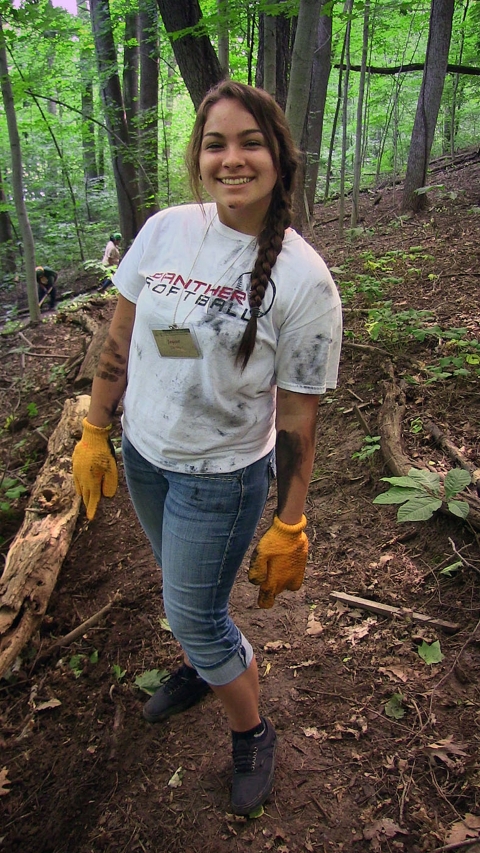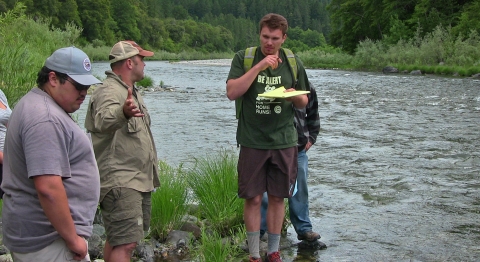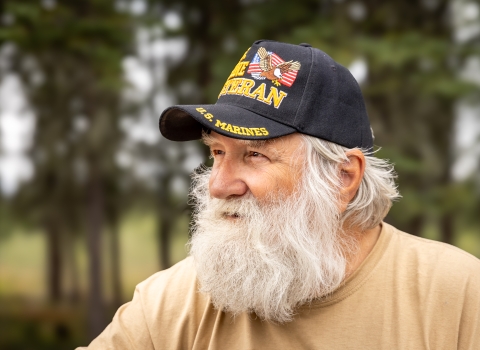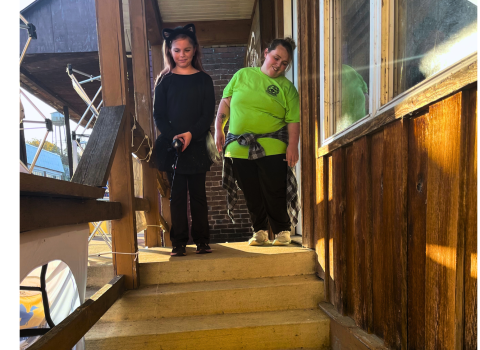Growing up on the Yurok Reservation in northern California, Jaycee Owsley dreamed of becoming a marine biologist.
However unrealistic her goal might have been, an opportunity in high school completely changed her future. Owsley was accepted into the U.S. Fish and Wildlife Service’s Klamath Basin Tribal Youth Program.
Just five weeks into her studies, she knew exactly how to make her dream come true.
The program was established in 2011 by the U.S. Fish and Wildlife Service to provide hands-on natural resource and career education to local tribal youth. Since then, more than 75 percent of the program's participants have pursued college degrees, an impressive success by any measure.
Today, Owsley, who is completing her first year at Humboldt State University in Arcata, Calif., has chosen an education and career path following her childhood dreams of marine biology.
“The Tribal Youth Program not only helped me understand the problems of a changing climate in our native communities, but to also be a part of the solution,” Owsley said. “After the Inter-Tribal Youth Leadership Congress, I declared I wanted to stay in the local area, become a fisheries biologist and work with the tribes to help our rivers.”
Trevor Super, a member of the Quartz Valley Indian Reservation and youth program coordinator, was a college intern with the U.S. Forest Service when the tribal youth program was created. Today, he directs it.
Upon graduating, Super was offered a permanent position by the Service in Yreka to develop and coordinate the new program which provides practical skills in field work, with mentoring from resource management professionals in real-world scenarios.
Each student works alongside biologists, hydrologists, botanists, engineers, foresters, scientists and land managers in the Basin. Youth can either volunteer, apply for a five-week high school leadership congress or a 10-week college level paid internship. The 10-week opportunity is for youth selected from each of the six federally recognized Klamath Basin tribes.
During the program, each student designs a research project based on a climate-related challenge. They establish a topic, study protocol, methods and materials and then present their findings at the program conclusion.
“Students are encouraged to incorporate tribal culture and traditions, and how their findings could benefit their tribe and the Klamath Basin resources,” Super said.
Partners and sponsors, such as the U.S. Fish and Wildlife Service, U.S. Forest Service, Bureau of Land Management, NASA, Bureau of Indian Affairs, Humboldt State University, CSU Sacramento, UC Davis, American River College and Southern Oregon University, provide additional resources and support.
Liston Case, of the Klamath Tribes, was graduated last summer from Oregon Institute of Technology with a degree in Environmental Science, and is a former participant. While finishing his degree program, he began his 10-week internship. Less than a month after completing the program, he was hired by the Klamath Falls Fish and Wildlife Office as a hydrologist doing restoration work throughout the Upper Klamath Basin.
“I gained experience in different fields of study such as fish and wildlife biology, river restoration, topographical surveys and cultural resource monitoring,” Case said. “What this program did was allow me to move forward much faster and advance into a permanent career.”
The program enabled him to give back by setting an example for younger Native Americans, he said. “I think I’ve showed that being a college graduate isn't out of reach. It can be attained through hard work and perseverance.”
Yurok Tribal member Kagat McQuillen says his experience enabled him to stay near his home.
“I figured I would have to leave my tribal ancestral territory to find work," he said. "If I didn't have the youth program opportunity, my education and professional work would be disconnected from the Basin.”
McQuillen began his career path first by working on a Pacific Fisher translocation project, then as a tribal wildlife grant assistant with the Service. In 2013, he was accepted into the Pathways 10-week intern program and was part of a team that received the Department of Interior Partners in Conservation Award from former Interior Secretary Sally Jewell.
Last summer, McQuillen served as research project lead advisor for the youth program prior to starting his master’s degree in natural resources at Humboldt State Univ.
“Elders used the (Klamath Basin) for subsistence and cultural activities since ancient times, so extending my education and career to conserve this ecosystem is just a tweak on tribal management style,” McQuillen said.
Super is quietly proud of the program he helped create. “We have given students a vision for their future,” he said. “The focus will continue to be on the students, and through successful collaboration, they are able to connect tribal traditions with a future in natural resource conservation on their ancestral land.”







